Bánh Canh Cua: Basic Information
Pronunciation
Alternative Name(s)
Dish Type
Course
Mealtime
Popular Bánh Canh Cua Variations

Bánh Canh Cua Chả Cá

Bánh Canh Cua Ghẹ
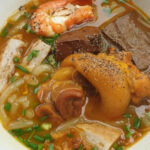
Bánh Canh Cua Giò Heo
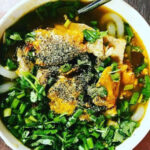
Bánh Canh Cua Xào
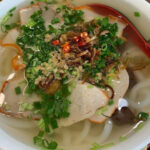
Bánh Canh Cua Lột

Bánh Canh Cua Nước Cốt Dừa
Bánh Canh Cua: Ingredients and Preparation
Main Ingredients
Main Cooking Method
Preparation Process
Bánh Canh Cua: A Deep Dive
Cultural Significance
Taste
Texture
Aroma
Color
Serving Style
Serving Temperature
Accompaniment
Occasions
Seasons
Special Diets
Calories
Popularity
Popular Similar Dishes
- Bánh Đa Cua
- Bún Riêu Cua
Popular Dining Area
Bánh canh cua is a Vietnamese thick noodle soup with noodles made from either rice or tapioca. As for the main highlight, crabs are the main attraction as it’s often boiled and served cut in half in a bowl.
To make the street-side dish more flavorful, the broth fully utilizes the water of boiling crab to infuse a strong seafood flavor. Additionally, the crab meat is only a part of the topping as the pork knuckles, shrimp, and straw mushrooms are also used to diversify the experience.
Besides the clear broth, some versions of bánh canh cua even employ cashew oil to produce a more attractive orange broth.
After getting to know the features of bánh canh cua, make sure to follow along to figure out its variants, how this dish is made, and the spots to find this dish in Vietnam before diving deeper into the advantages and disadvantages of eating it.
Plus, I’d like to give you some answers to common questions revolving around the dish. Then, explore some dishes that have similar features to bánh canh cua.
Key Points
Bánh Canh Cua Images
What Are the Many Versions of Bánh Canh Cua?
Bánh canh cua is not about crab only, as many ingredients are used to produce various versions of this treat:
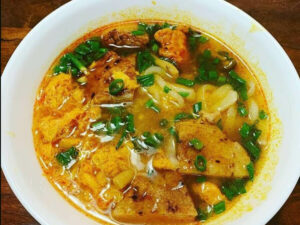
Bánh Canh Cua Chả Cá
Features slices of fish cake alongside crab in a rich broth
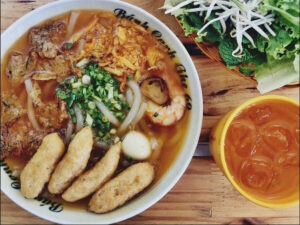
Bánh Canh Cua Ghẹ
Utilizes the distinctive taste of blue crab, known for its sweet meat
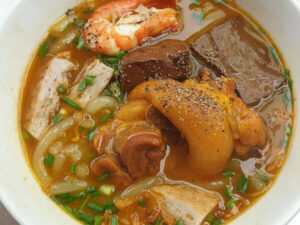
Bánh Canh Cua Giò Heo
Includes pork trotters for a gelatinous texture and richer flavor profile in the broth

Bánh Canh Cua Xào
Offer stir-fried crab meat that provides a caramelized flavor
Served in a broth with toppings
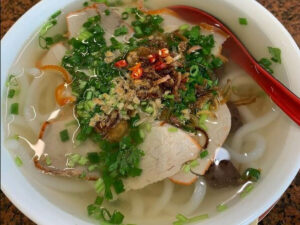
Bánh Canh Cua Lột
Highlights the soft profile of peeled crab
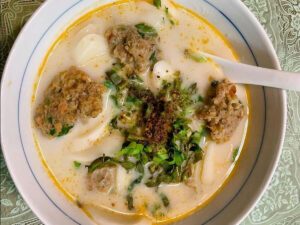
Bánh Canh Cua Nước Cốt Dừa
Characterized by the creamy, sweet taste of coconut milk in the broth
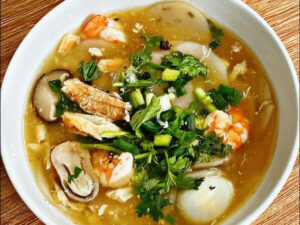
Bánh Canh Cua Phồng Tôm
Distinguished by the crunchy texture of shrimp crackers added on top
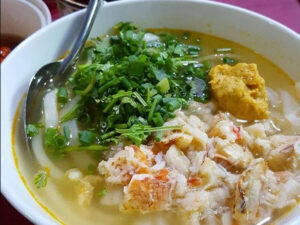
Bánh Canh Cua Rời
Named after the separation of the tapioca noodles when served
After knowing about the variants of bánh canh cua, you should have a look at the process of making a standard bowl of this lovely crab noodle soup.
How to Make Bánh Canh Cua?
Making bánh canh cua is all about balancing the flavor that ideally brings out the flavor of the crabs in the dish:
Step 1: Broth Preparation
Start by boiling crab shells in water to create a rich seafood stock. This may take a couple of hours to extract all the flavors. Season the broth with salt, fish sauce, and a bit of sugar to taste.
Step 2: Crab Preparation
Once cooked, remove the crab meat from the shells. However, some often just cut the crab in half for serving.
Step 3: Additional Toppings
Prepare additional toppings like pork knuckles, shrimp, and straw mushrooms. Pork knuckles are typically simmered until tender, shrimp are peeled and deveined, and mushrooms are cleaned and sliced.
Step 4: Noodle Preparation
Bánh canh noodles, which are thicker than most other Vietnamese noodles, are either homemade or store-bought. They are boiled until they are just tender and then rinsed under cold water to stop the cooking process.
Step 5: Assembling the Bowl
Place a portion of the cooked noodles in a bowl. Add the prepared toppings, including the crab meat, pork, shrimp, and mushrooms.
Step 6: Finishing the Broth
Before serving, ensure the broth is seasoned to your liking and hot. Some versions of the dish may also include a spoonful of annatto oil for color.
Step 7: Serving
Pour the hot broth over the noodles and toppings into the bowl. Garnish with chopped green onions, cilantro, and a squeeze of lime. Chili paste or fish sauce can be added to taste.
The process of making bánh canh cua is relatively laborious, but it’s worth it. However, you should prepare yourself with some of the locations that sell bánh canh cua in Vietnam.
Where to Eat Bánh Canh Cua in Vietnam?
When in Vietnam, these destinations are your ticket to get a lovely bowl of bánh canh cua to enjoy the flavor of Vietnamese cuisine:
In Vietnam
Bánh canh cua Trần Khắc Chân
Address: 87 Tran Khac Chan, Tan Dinh ward, District 1, HCMC
Opening time: 11 AM – 8 PM
Bánh canh cua Bà Ba
Address: 84/6 Nguyen Bieu Street, Ward 1, District 5, HCMC
Opening time: 3 PM – 9 PM
Bánh canh cua Tôn Thất Đạm
Address: No. 8, Ton That Dam, Nguyen Thai Binh ward, District 1, HCMC
Opening time: 7 AM – 11 AM
Remember, these are just some of the locations that specialize in bánh canh cua to deliver the best experience. Now, you should also be aware of the benefits and drawbacks of eating bánh canh cua to determine whether this dish fits your taste buds or not.
Pros and Cons of Eating Bánh Canh Cua
These are the features that many should consider carefully when eating bánh canh cua:
Pros
Cons
Before you head out to enjoy bánh canh cua, make sure to learn about some of the inquiries that people often have about the dish.



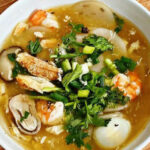
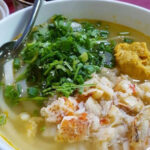

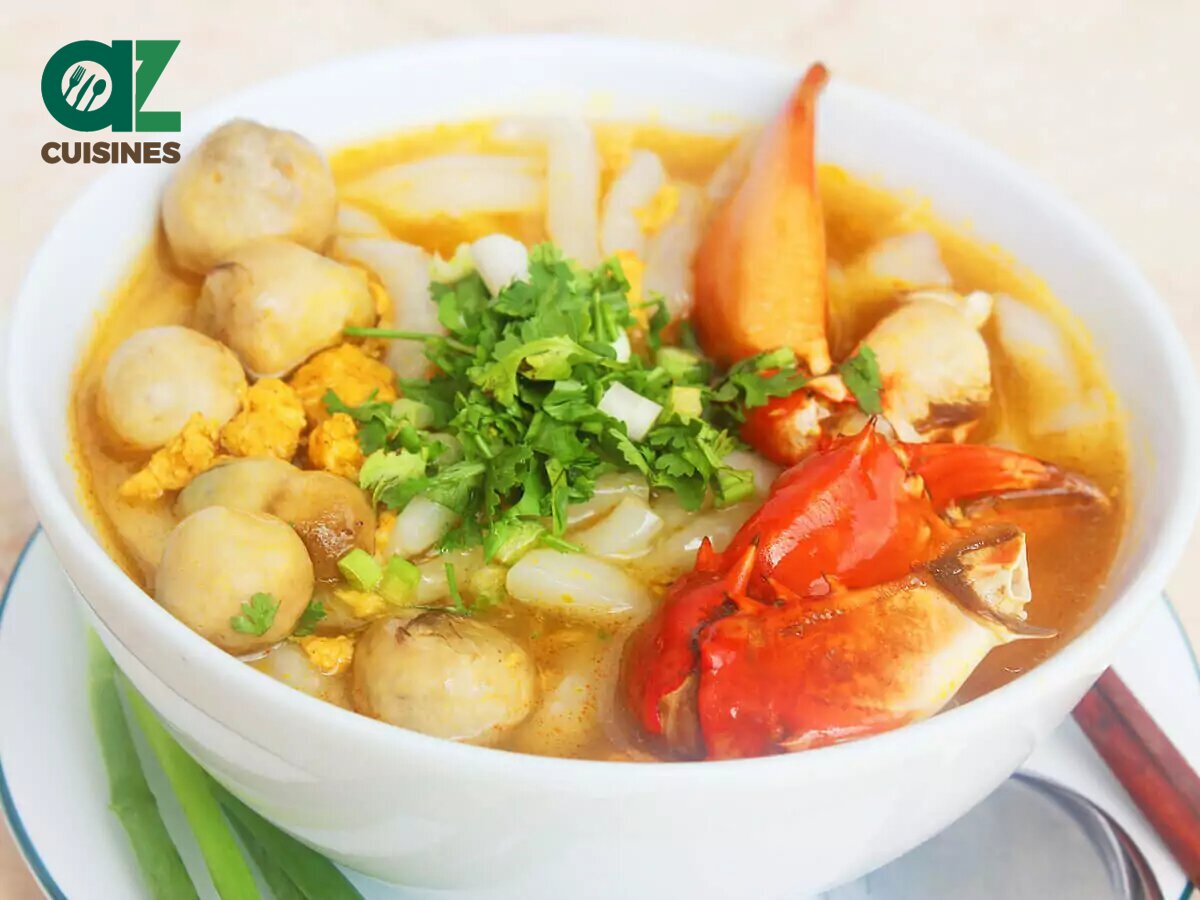
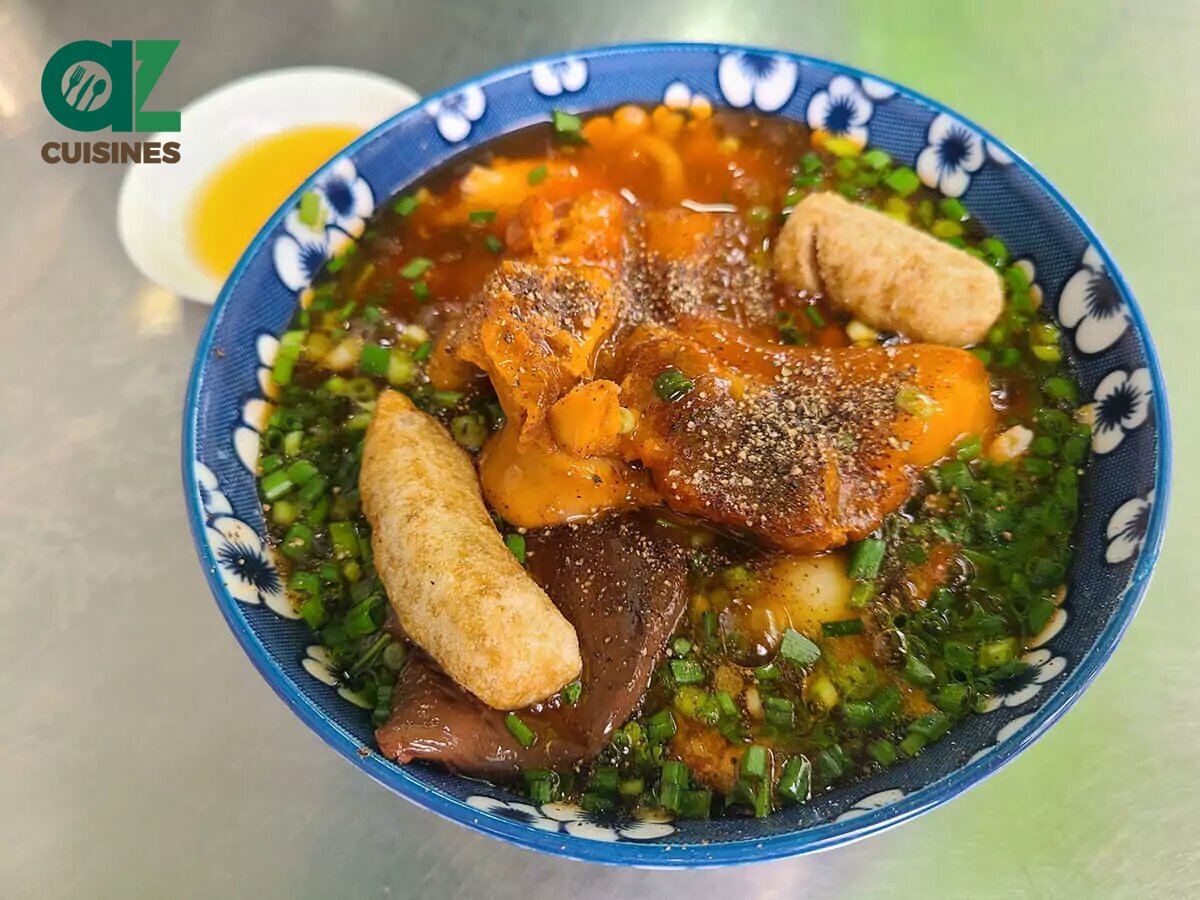
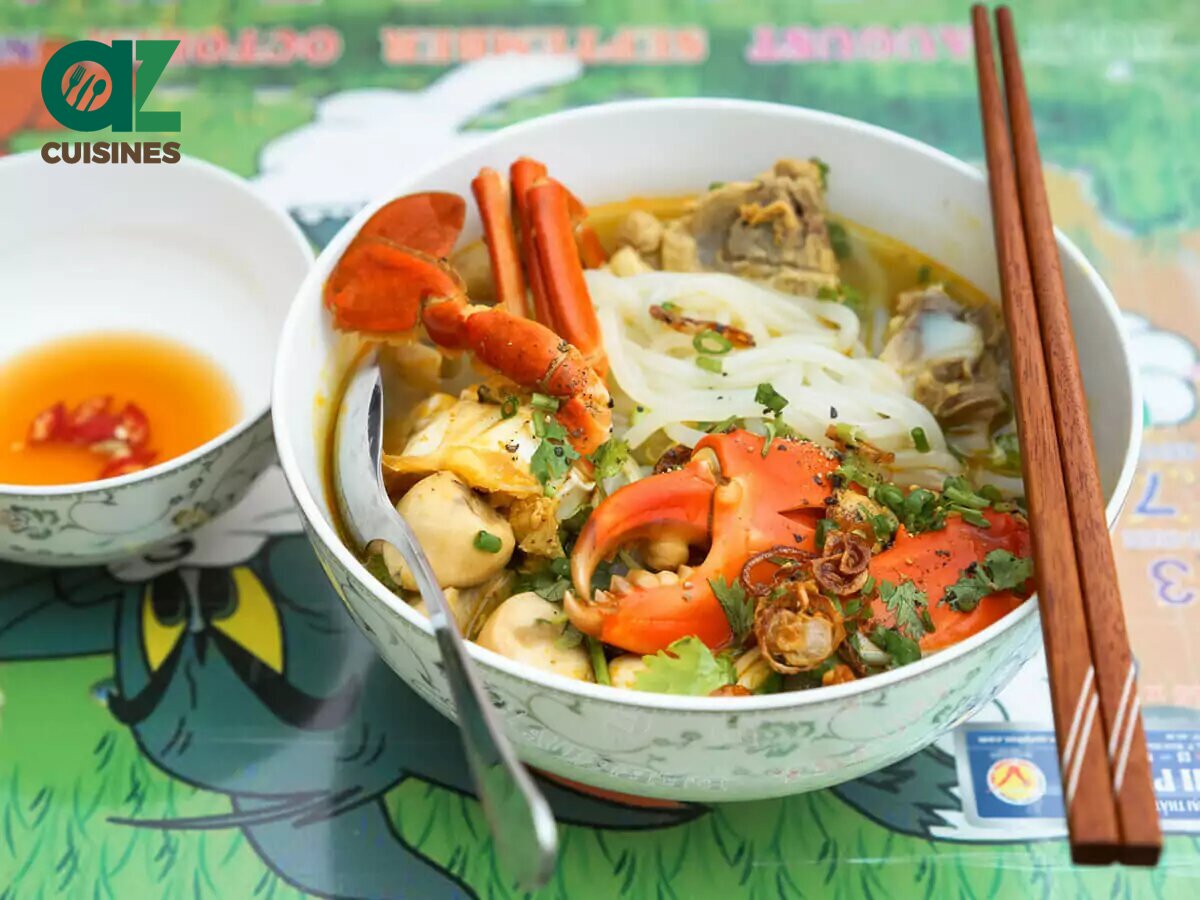
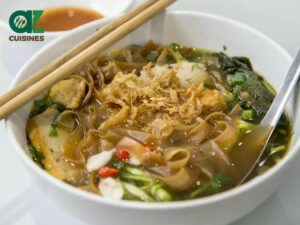
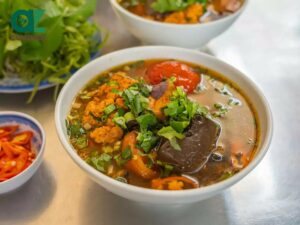
Truc Tran (Kris)
Senior Food Editor
Expertise
Home Cooking, Meal Planning, Recipe Development, Baking and Pastry, Food Editor, Cooking-video Maker, Vietnamese Food Evaluation Expert
Education
Truc Tran (Kris), an experienced food writer and editor, is great at exploring and describing global cuisines, from simple street food to fancy dining. In her writing, she skillfully mixes different flavors, cooking methods, and culinary traditions, showing the unique character of various cultures through their food and drinks. On azcuisines.com, Kris highlights her knowledge, especially in Asian cuisine and worldwide traditional dishes.